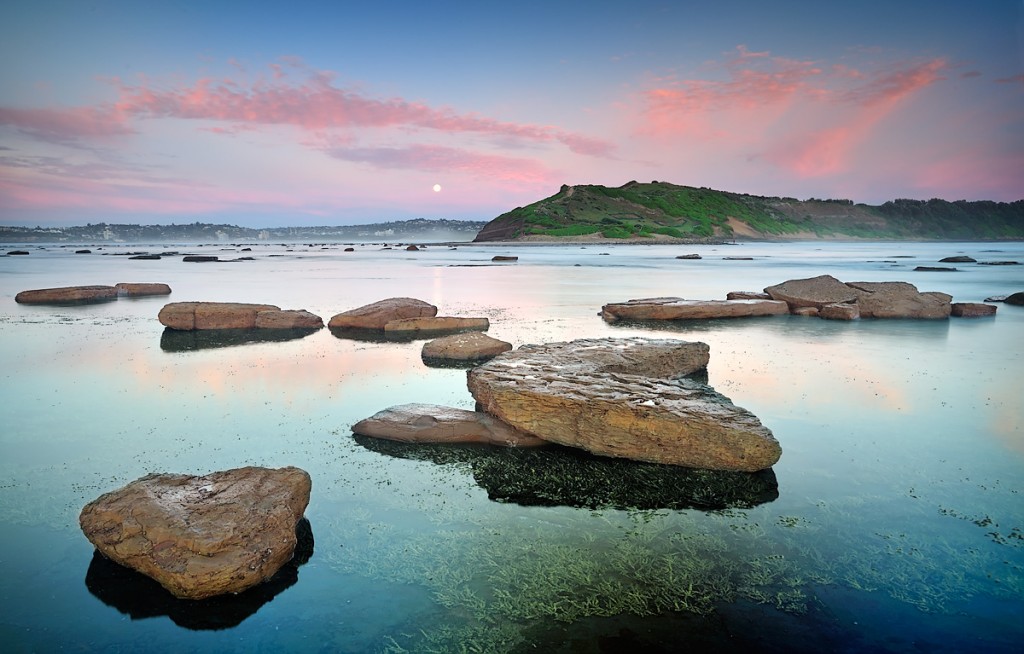
Moon Setting Over Long Reef By Brent Pearson
I grew up on the Northen beaches of Sydney and as a kid always enjoyed exploring the marine life on Long Reef. I still enjoy going back there now with my camera. There is something magical about this Marine Park. From the golf course up on the headland, through to the reef itself, Long Reef has lots to offer the photographer.
There are great shots looking out to sea in the East, as well as shooting back to the headland that is facing West (as in the photo above).
Special Photographic Features or Notes
The map below shows you some of the different areas that I have explored at Long Reef.
Of course as you are walking down the main hill from the headland, there are some great panoramas to be had (if you are a pano photographer). This guide will focus on some of the areas that are down on the reef itself.
Big Rocks on Reef
One of the first things you notice when you walk down from the headland are the big rocks scattered all over the reef. they are a lot of fun to photograph. If you get the tides right they can appear to be floating on water (about a 1m tide will give you this effect)
These rocks can be photographed with the dawn background or can quite easily be photographed the other way around with the headland in the background.
There is a bright green weed that grows on the reef at a certain time of the year. From memory this is around the September/October time frame. It makes the reef even more colourful.
Wave Breaking Over Rocks
If you walk out to the most North Eastern point of the reef you come to a lovely rock formation that sits between the ocean and a rock pool. If you get the tides right then the waves will gently roll over these rocks and flow into the rock pool making for some lovely shots. If you want to go for the shot below, you will need to be there when the tides are somewhere between 0.5m and 1m. Any more than 1m and you won’t be able to get out to the outer reef safely. If it’s lower than 0.5m then you may not get any waves breaking over the rocks.
Night Photography
Long Reef is fine for night photography, however if you are shooting back over the headland (West) then you will get a lot of light pollution. However there are not lights falling on the reef itself.
Special Equipment
There are a few bits of special equipment I would recommend for Long Reef.
- Rock hopping sandals with an enclosed toe. Because of the water flowing over the rock shelf, YOU WILL GET WET FEET…It’s pretty much unavoidable, so I always wear my rock-hopping sandals here so I’m not worried about water flowing over my ankles etc.
- Headlamp. If you are hiking down the beach to the rock shelf before sunrise, I would advise taking a headlamp as the rock shelf will be in pitch blackness.
- Grad ND filters. The rock shelf faces due East, so if you are shooting sunrise, bring your normal kit of grad NDs.
Best Time of The Day
Pre-dawn and sunrise of course. However dusk is also lovely.
Tidal Information
OK… Tides are critical for shooting Long Reef. You should not think about shooting Long Reef if the tides are any higher than 1m.
The reef gives good protection against big waves, so swell is usually not an issue unless you are shooting the outer rocks.
Wind Information
Long Reef is pretty exposed to winds from all directions.
Getting there
Click Here to see the location marked on Google Maps
From Pittwater Rd, turn East into Anzac Avenue and then drive in through the Golf Club and all the way to the parking lot up on the headland. Then you will follow the trail alongside the golf course (you can’t get lost). Once you get to the lookout on the top, you will easily see the path down to the reef itself. The trails are very easy to walk along, no scrambling etc.

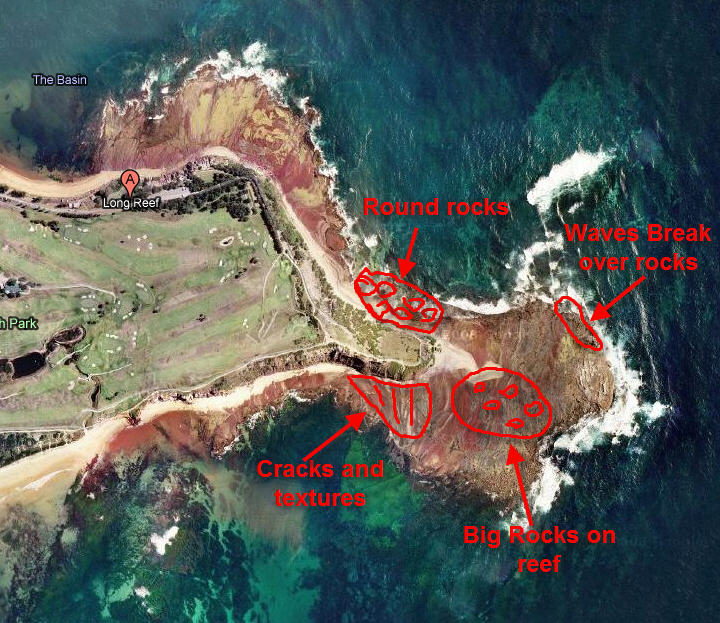
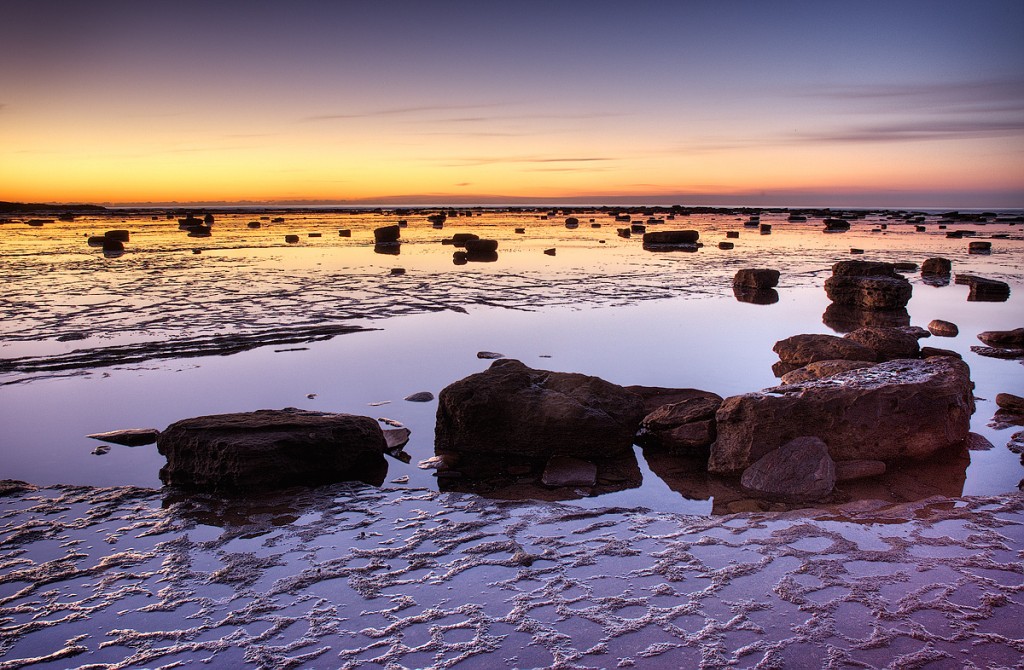
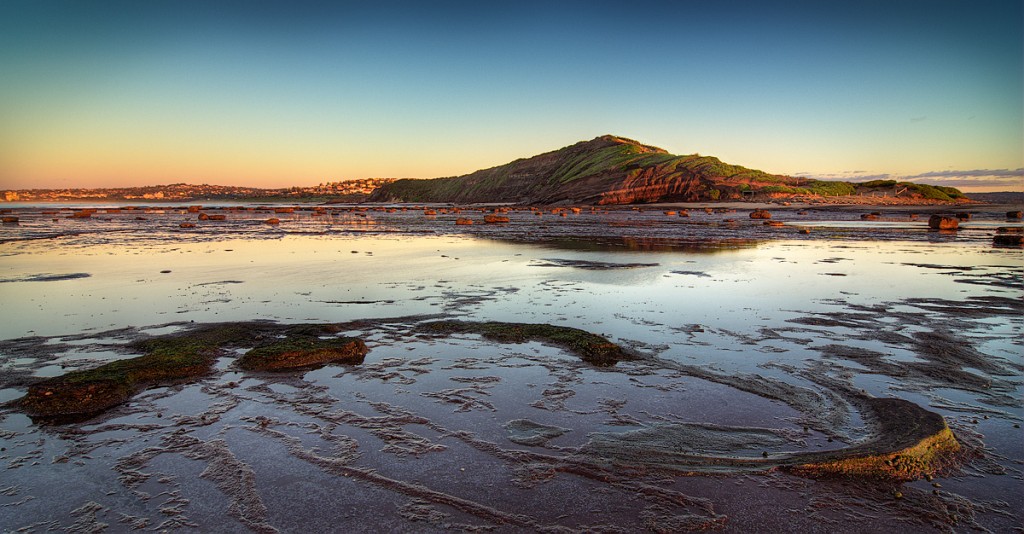
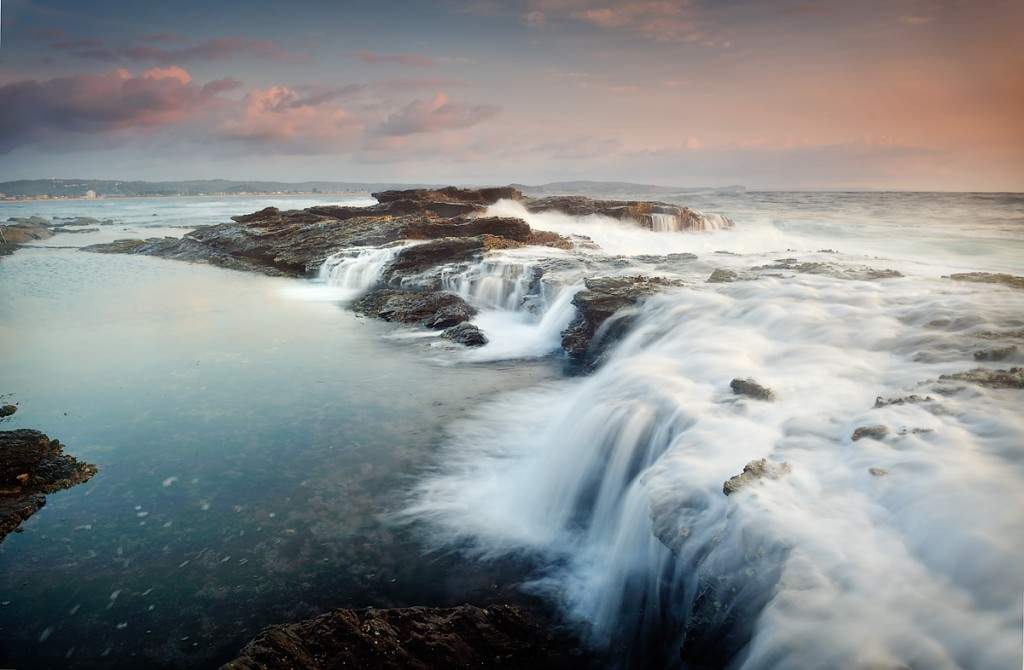
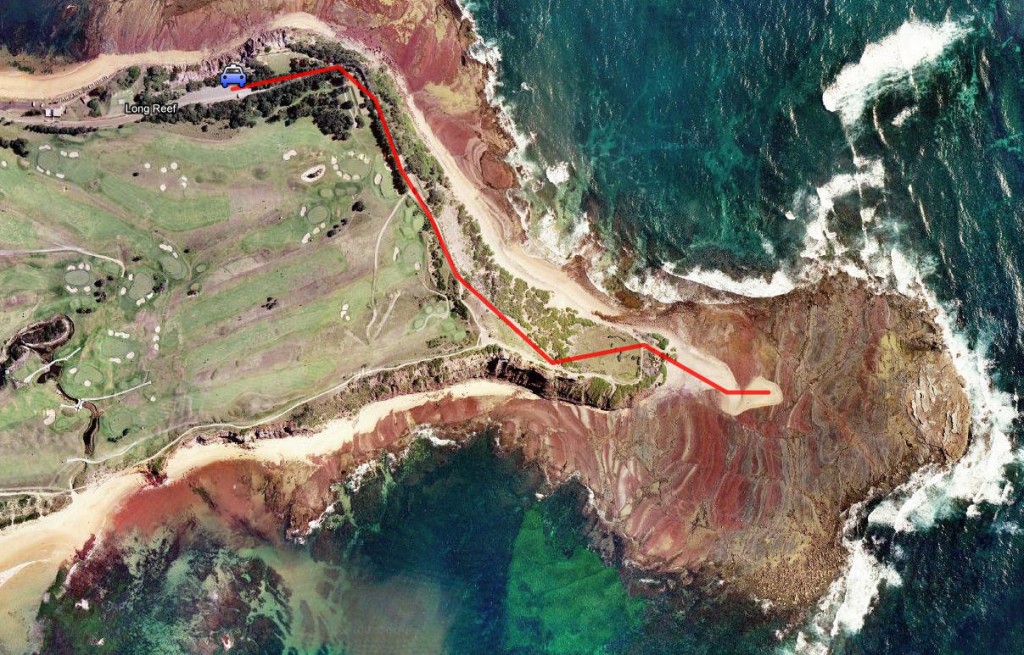





A landscape photographer’s “must visit” — Thanks for your guide, which is accurate. This location is fairly easily accessible. I arrived about 6.20am, which is about 40mins before sunrise, so it was very dark. The path along the golf course was pitch dark and I’m not sure if a full moon would even help in some parts that are covered by trees, so I would definitely recommend a torch. It was a bit hard in the darkness to find the top of the steps, but it’s where there are a bunch of large manmade shells in a more open area. Once on the shelf, I found it quite flat and easy to walk around in the low tide. Next time, I might bring gumboots as the shelf was covered in water, in some parts ankle deep, but I found I could navigate around the high spots quite easily. By the time the tide had dropped around 8am, it was pretty much just wet rock.
I would suggest the best shots are to be had before sunrise, depending on what you’re looking for. If you went on a morning where there was a lot of clouds on the horizon, then you may get a spectacular shot of the main reef in the foreground. I’ll be watching out for those conditions for a return visit. If you would like to see some of my images of this place, here’s a Flickr link to one of them. There are some others I uploaded on the same day.
http://www.flickr.com/photos/vicfefer/5917576724/in/photostream
If others decide to go there, hope you enjoyed it as much as I did and I’m sure you’ll be rewarded well.
As a local, and somebody who has played golf there for over 20 years, and a mate of somebody who fishes off the reef regularly, I would strongly suggest, that if you wish to go onto the reef (apart from low tide) that you wear shoes with cleats and a life jacket !!! Freak waves occur more often than you think !!